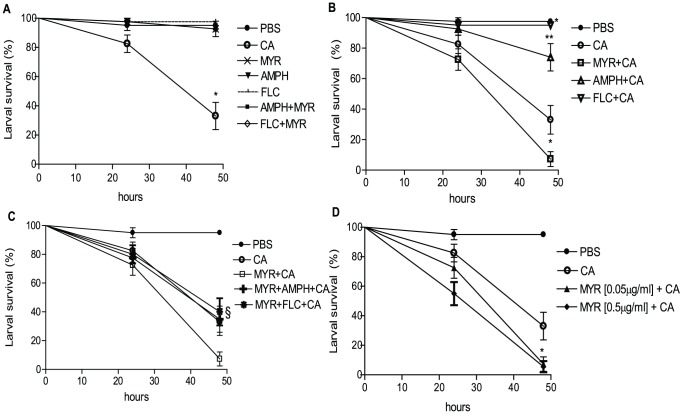Figure 1. Effects of the antifungal drugs myriocin, amphotericin B, and fluconazole on Galleria mellonella survival 24 and 48 h post-treatment.
(A) Comparison of the survival rates of G. mellonella larvae following injection with PBS, or antifungal drugs (MYR, FLC, or AMPH) alone or in combination, or with C. albicans alone. The survival rate of the Candida-infected group was significantly lower than the PBS control group (*p<0.0001, n = 20) and also compared with all other groups. (B) Comparison of the survival rates of G. mellonella larvae following injection with PBS, or C. albicans alone, or the antifungal drug followed by C. albicans. Pre-treatment of larvae with MYR, or AMPH or FLC had significant impacts on survival rates when compared with CA group (*p<0.001 and **p = 0.003, n = 20). (C) Comparison of the survival rates of G. mellonella larvae following injection with PBS, or C. albicans alone or with MYR combined with either AMPH or FLC followed by C. albicans. Larvae from combined groups (MYR+AMPH+CA and MYR+FLC+CA) showed increased survival rates (§ p = 0.03,and p = 0.01, n = 20), respectively, when compared with MYR+CA group. (D) Comparison of the survival rates of G. mellonella larvae following injection with PBS, or C. albicans alone or with two different concentrations of MYR followed by C. albicans. Effect of MYR at higher concentration (0.5 µg/ml) decreased the survival rate when compared with CA group (*p<0.001, n = 20). PBS = injected buffer; CA = Candida albicans; MYR = myriocin; AMPH = amphotericin; FLC = fluconazole.

